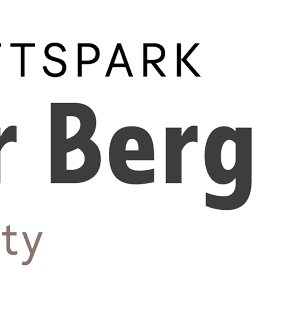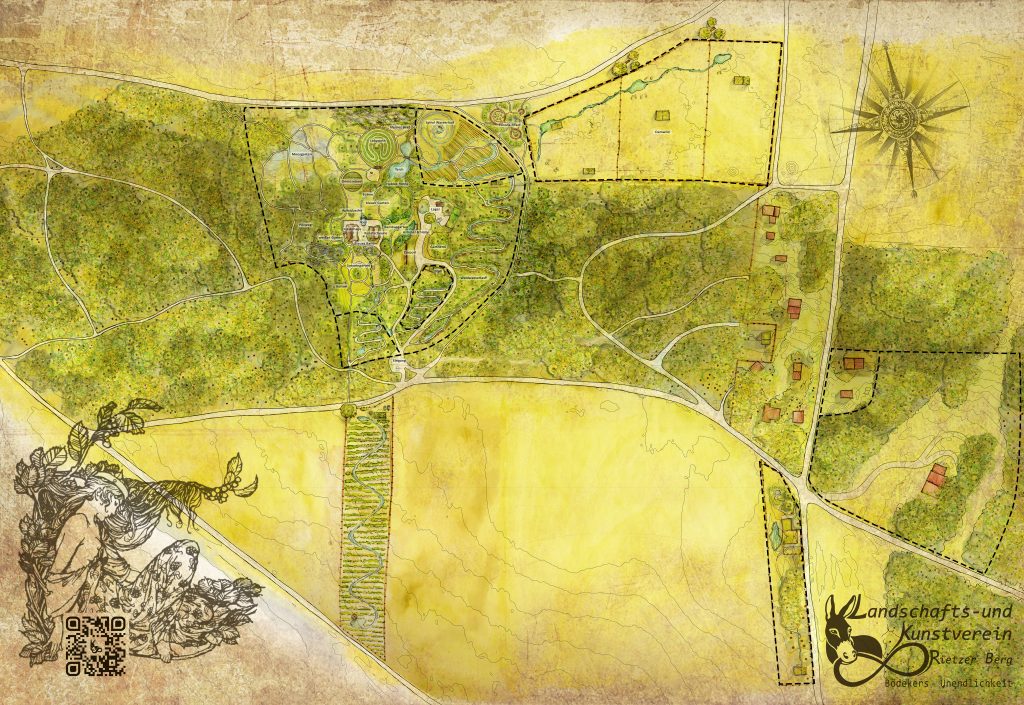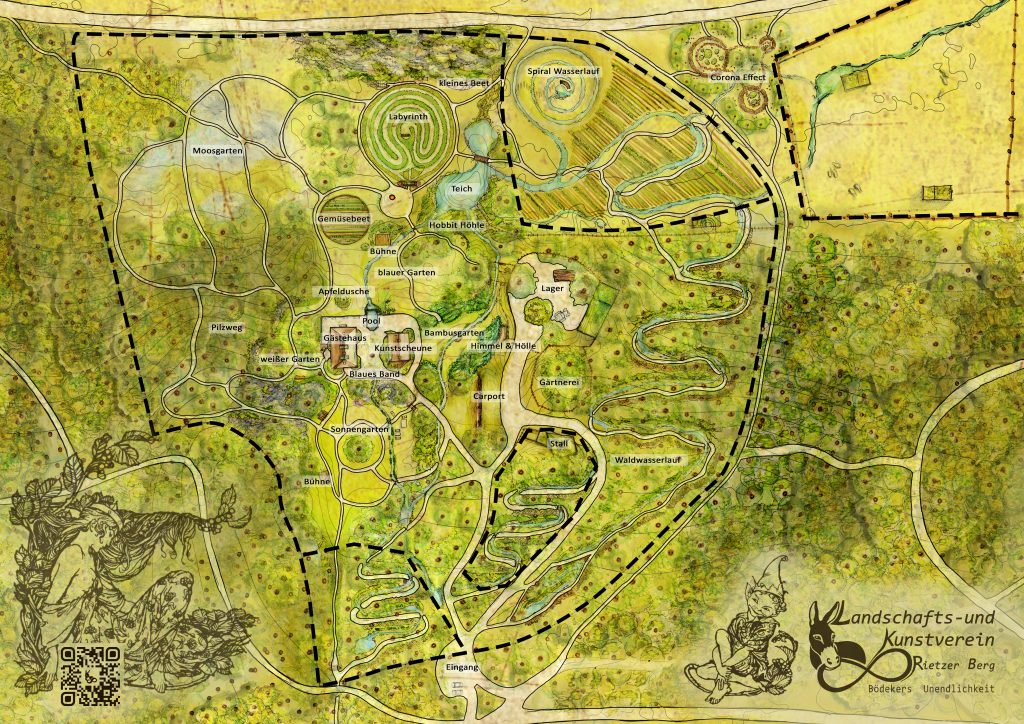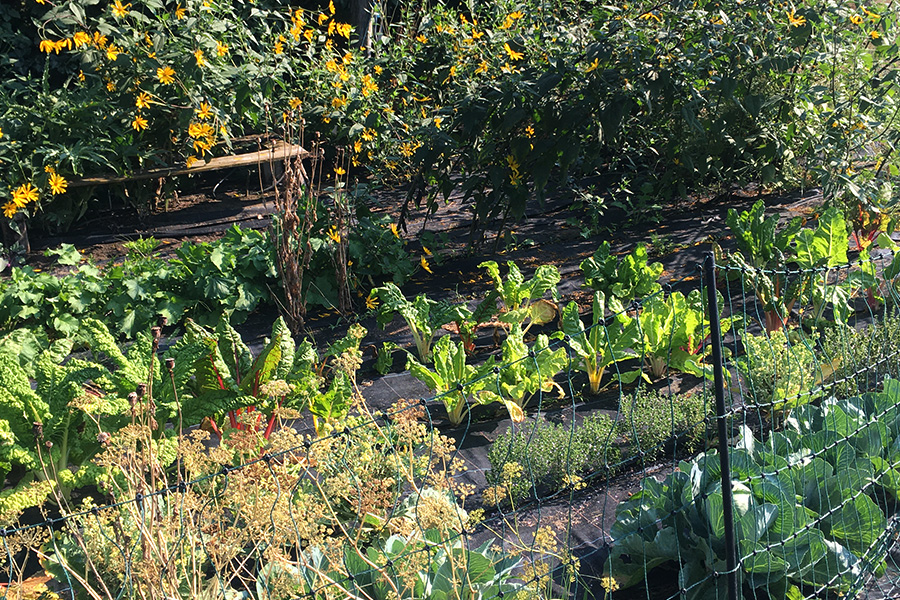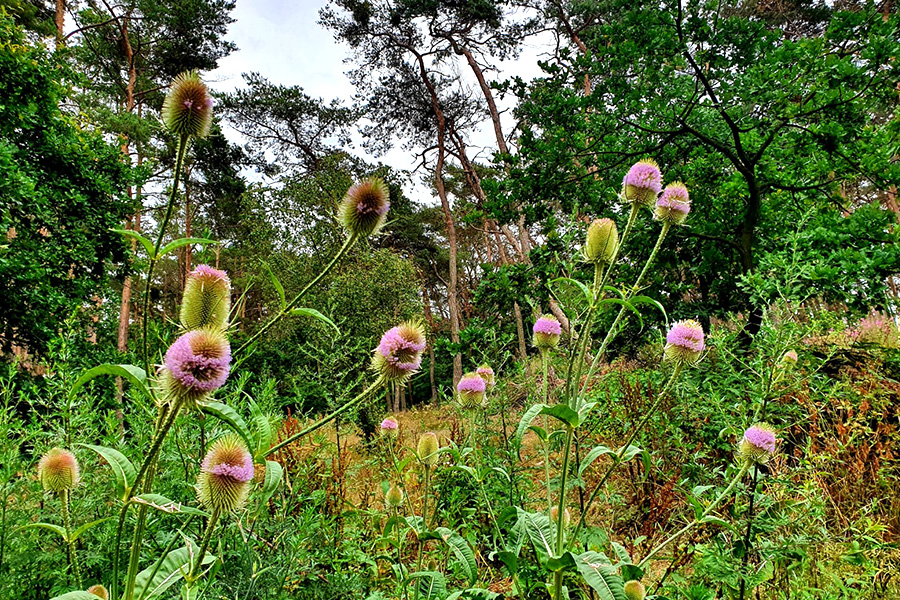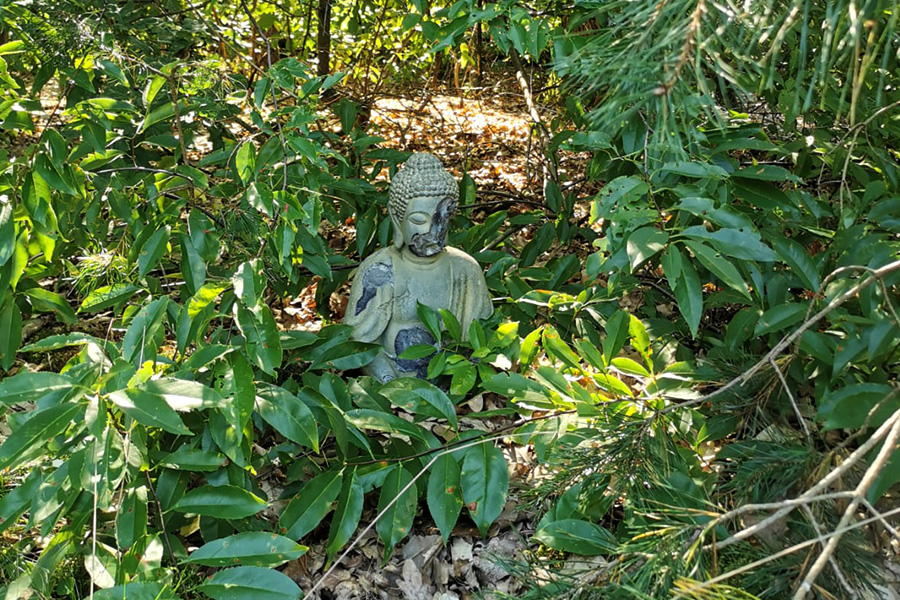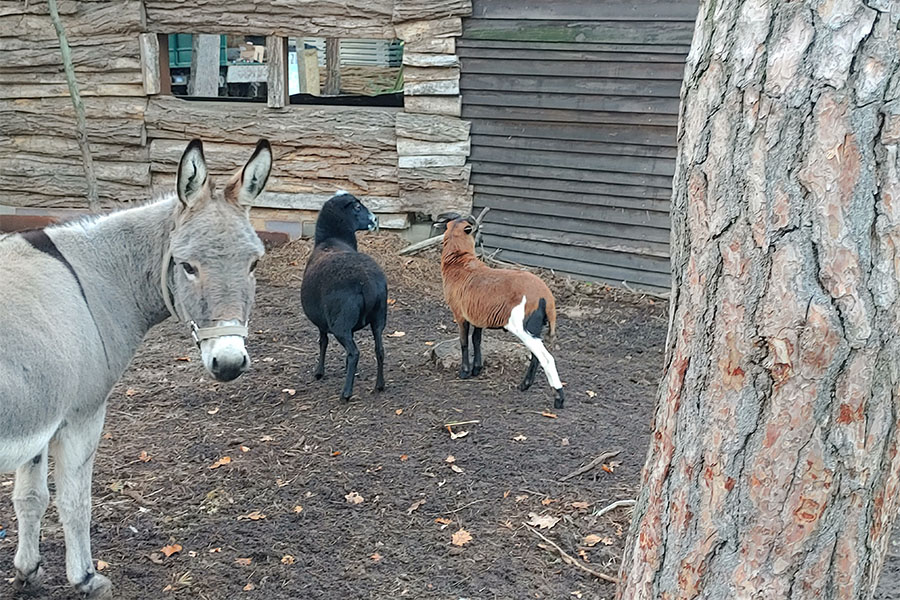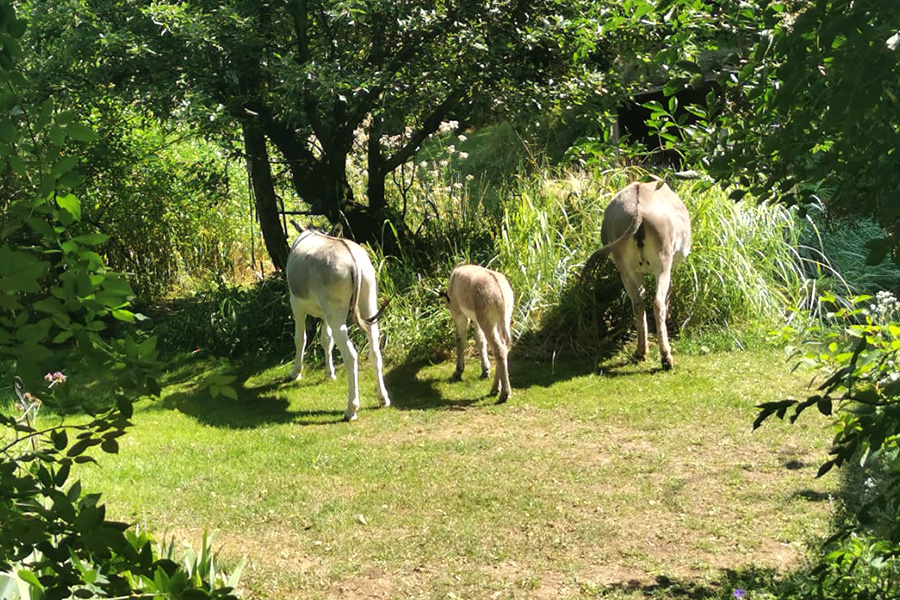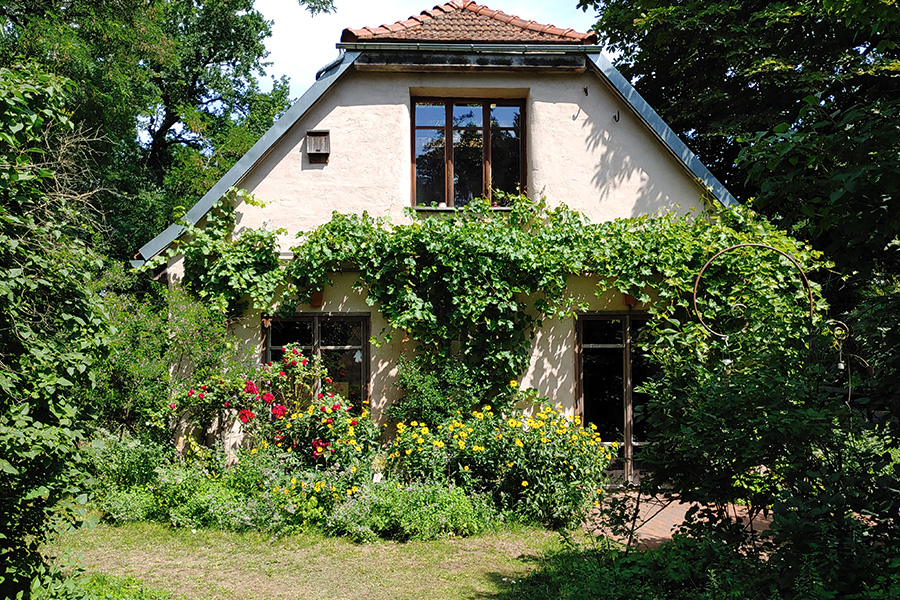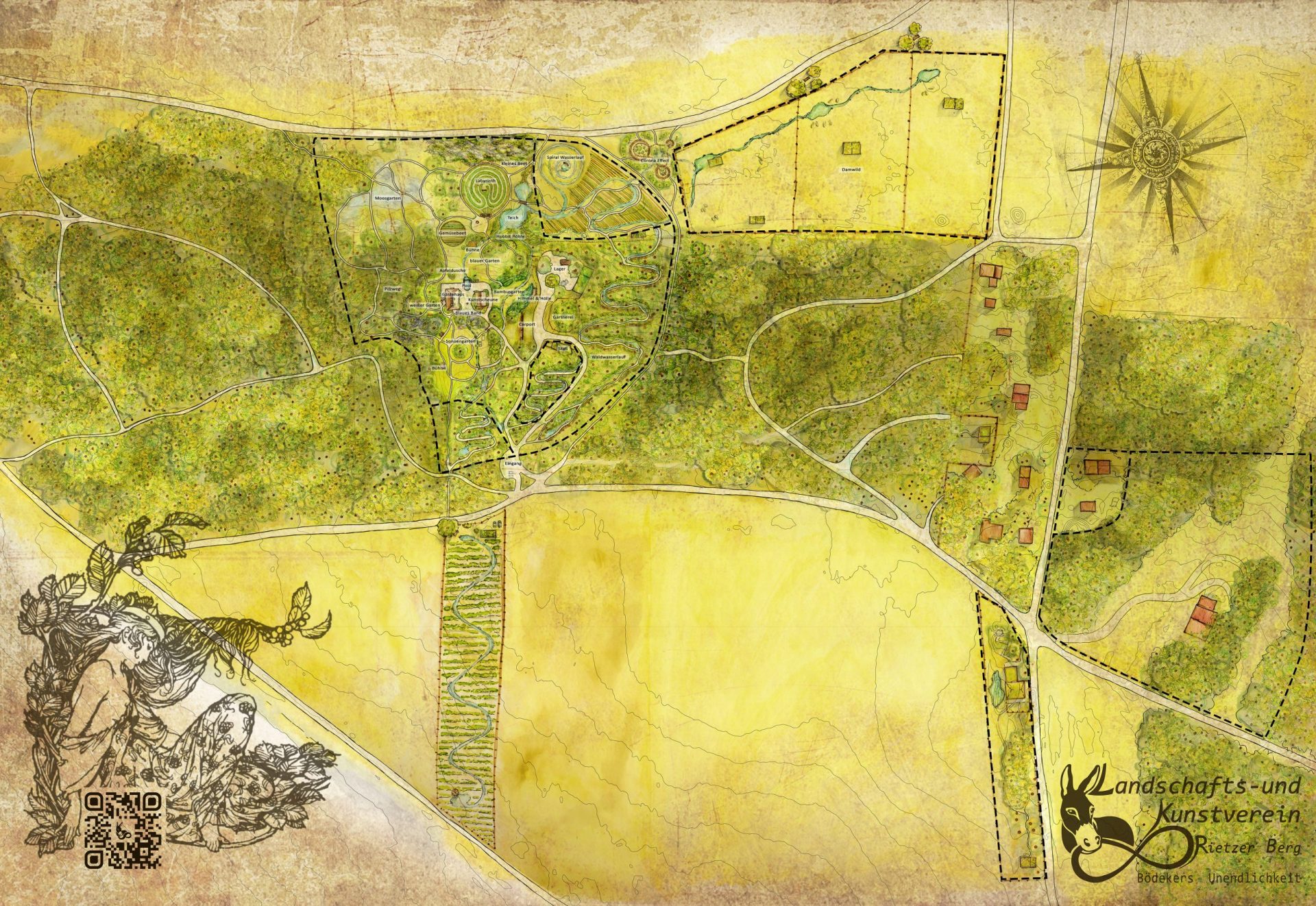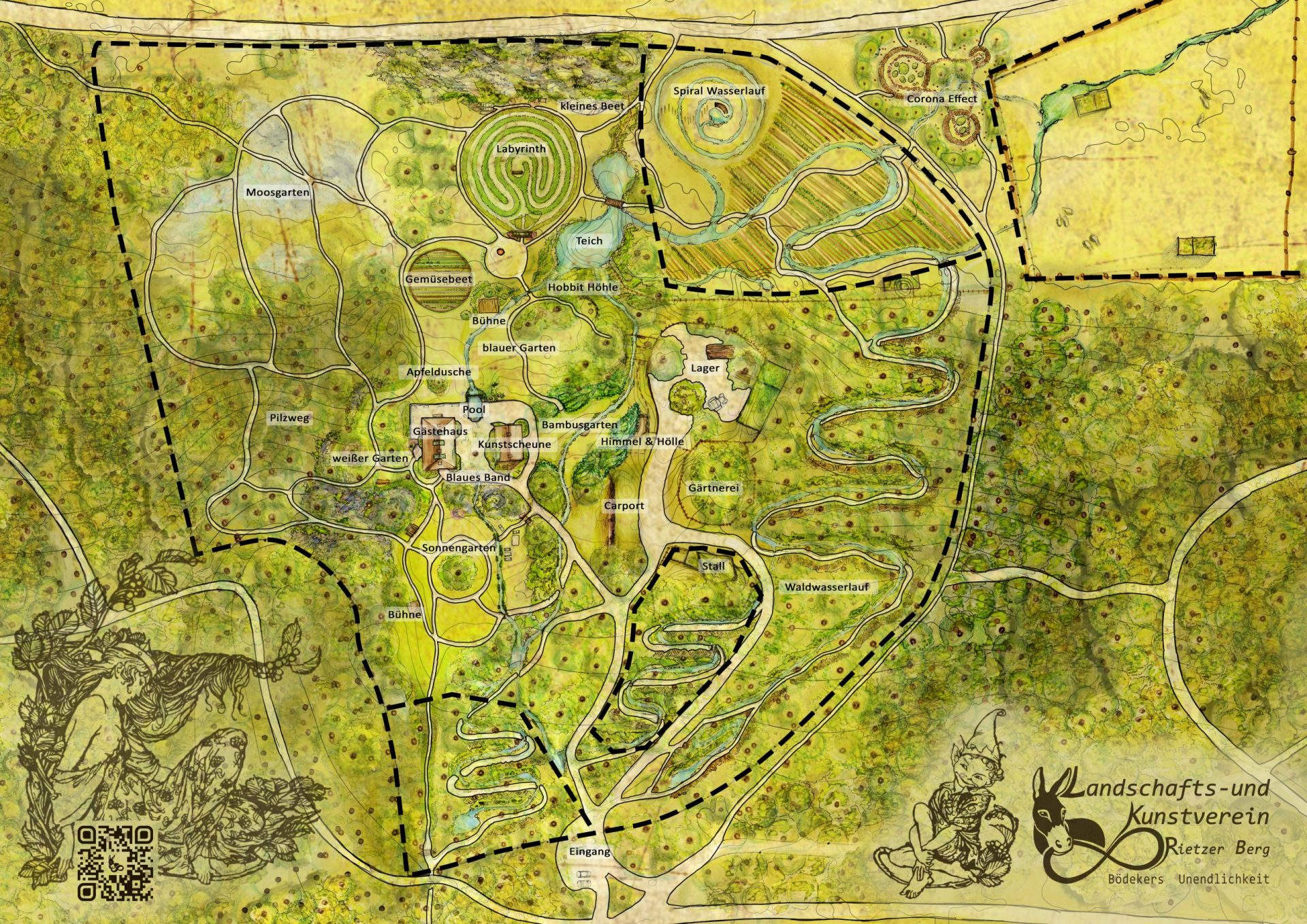Permaculture
The concept of permaculture was created by the Australians Bill Millison and David Holmgren in the 1980s. It is a combination of the two words "permanent" and "agriculture".
Although permaculture can be applied to all areas of life, it is mostly associated with agriculture. The main idea is to save resources, monitor nature closely and work with nature instead of against it. In permaculture everything is connected with one another and the various elements of a system cannot be considered separately.
A very important and ancient design principle in permaculture is the forest garden. By using the various layers of the forest self-sufficiency is possible in a small space. In the upper layers are the trees, below berry bushes and fruit-bearing shrubs and in the lower layers various herbs and groundcover. In the soil layer it is possible to culture rhizomatous vegetables.
By intelligently selecting cooperating plant communities throughout several years, a self-sufficient forest garden can be created for food production. Flexibility and stability are ensured by the ecological diversity.
The concept of permaculture was created by the Australians Bill Millison and David Holmgren in the 1980s. It is a combination of the two words "permanent" and "agriculture".
show more
Although permaculture can be applied to all areas of life, it is mostly associated with agriculture. The main idea is to save resources, monitor nature closely and work with nature instead of against it. In permaculture everything is connected with one another and the various elements of a system cannot be considered separately.
A very important and ancient design principle in permaculture is the forest garden. By using the various layers of the forest self-sufficiency is possible in a small space. In the upper layers are the trees, below berry bushes and fruit-bearing shrubs and in the lower layers various herbs and groundcover. In the soil layer it is possible to culture rhizomatous vegetables.
By intelligently selecting cooperating plant communities throughout several years, a self-sufficient forest garden can be created for food production. Flexibility and stability are ensured by the ecological diversity.
Long-term instead of short-term
Permaculture is ethically bound to sustainability. Soil, water and all other vital resources should be managed in such a way that they are preserved for future generations.
Every element has its use and a role in the whole system. That is why it is always the whole system that is taken into account instead of it's separate elements. Another aspect of the long-term approach is the thorough planning how each element is arrange to achieve the best possible combination.
To do this, the garden is organized into zones according to the use and distance from the dwelling of each element. the elements that need most attention - like animals and complex vegetables - are closest to the house and others - like fruit trees - are furthest away.
Permaculture is ethically bound to sustainability. Soil, water and all other vital resources should be managed in such a way that they are preserved for future generations.
show more
Although permaculture can be applied to all areas of life, it is mostly associated with agriculture. The main idea is to save resources, monitor nature closely and work with nature instead of against it. In permaculture everything is connected with one another and the various elements of a system cannot be considered separately.
A very important and ancient design principle in permaculture is the forest garden. By using the various layers of the forest self-sufficiency is possible in a small space. In the upper layers are the trees, below berry bushes and fruit-bearing shrubs and in the lower layers various herbs and groundcover. In the soil layer it is possible to culture rhizomatous vegetables.
By intelligently selecting cooperating plant communities throughout several years, a self-sufficient forest garden can be created for food production. Flexibility and stability are ensured by the ecological diversity.
Diversity instead of monocultures
The design and conservation of diversity is a key objective of permaculture. Natural ecosystems always serve as an example when designing in permaculture.
It is important that each element of a garden always serves more than one purpose. For example the pool is habitat for the fish and other aquatic animals. But is it also part of the irrigation system and can be used for bathing. Our ducks give eggs and also eat snails and fertilize the property. And our donkeys feed on the invasive black cherry and protect the sheep and goats from wolves.
Diversity can also be found in the selection of vegetable varieties that are not planted separately as in conventional agriculture but in mixed cultures. This is how onions protect carrots from the carrot fly and tagetes attract snails away from the vegetables. Parasites that specifically harm one kind of vegetable produce less harm in a mixed culture than in a monoculture.
The design and conservation of diversity is a key objective of permaculture. Natural ecosystems always serve as an example when designing in permaculture.
show more
It is important that each element of a garden always serves more than one purpose. For example the pool is habitat for the fish and other aquatic animals. But is it also part of the irrigation system and can be used for bathing. Our ducks give eggs and also eat snails and fertilize the property. And our donkeys feed on the invasive black cherry and protect the sheep and goats from wolves.
Diversity can also be found in the selection of vegetable varieties that are not planted separately as in conventional agriculture but in mixed cultures. This is how onions protect carrots from the carrot fly and tagetes attract snails away from the vegetables. Parasites that specifically harm one kind of vegetable produce less harm in a mixed culture than in a monoculture.
Optimize instead of maximize
To increase the yield, permaculture strives to optimize instead of maximize. In the long run, maximizing would be a waste of energy because the higher the used diversity the less energy needs to be provided for the system. The water courses on Rietzer Berg are an example for the clever use of small spaces. They show that different niches can be created by using different dimensions and layers without usi much space. The green roofs and walls are another example of optimizing and the clever use of existing spaces.
To increase the yield, permaculture strives to optimize instead of maximize. In the long run, maximizing would be a waste of energy because the higher the used diversity the less energy needs to be provided for the system.
show more
It is important that each element of a garden always serves more than one purpose. For example the pool is habitat for the fish and other aquatic animals. But is it also part of the irrigation system and can be used for bathing. Our ducks give eggs and also eat snails and fertilize the property. And our donkeys feed on the invasive black cherry and protect the sheep and goats from wolves.
Diversity can also be found in the selection of vegetable varieties that are not planted separately as in conventional agriculture but in mixed cultures. This is how onions protect carrots from the carrot fly and tagetes attract snails away from the vegetables. Parasites that specifically harm one kind of vegetable produce less harm in a mixed culture than in a monoculture.
Cooperation instead of competition
We leave the garden as much as possible to itself to keep it productive with the least possible energy input. An example of this is the use of cooperative structures like an organic natural pest control. Energy-intensive pesticides not only drive away harmful, but also beneficial insects that can do a lot of work for us. As soon as the harmful insects strike again there are no more benficial insects to protect us and the harm is a lot bigger than initially, because the pest population gets out of control and the energy input increaases significantly.
Our animals are a good example for cooperation. The runner ducks keep the snail population small and the grass short. Donkeys, deer, sheep and goats reduce the invasive black cherry that spreads widely in this region. As a consequence, native shrubs and trees can be planted again and the forest is rejuvenated.
We leave the garden as much as possible to itself to keep it productive with the least possible energy input. An example of this is the use of cooperative structures like an organic natural pest control.
show more
Energy-intensive pesticides not only drive away harmful, but also beneficial insects that can do a lot of work for us. As soon as the harmful insects strike again there are no more benficial insects to protect us and the harm is a lot bigger than initially, because the pest population gets out of control and the energy input increaases significantly.
Our animals are a good example for cooperation. The runner ducks keep the snail population small and the grass short. Donkeys, deer, sheep and goats reduce the invasive black cherry that spreads widely in this region. As a consequence, native shrubs and trees can be planted again and the forest is rejuvenated.
